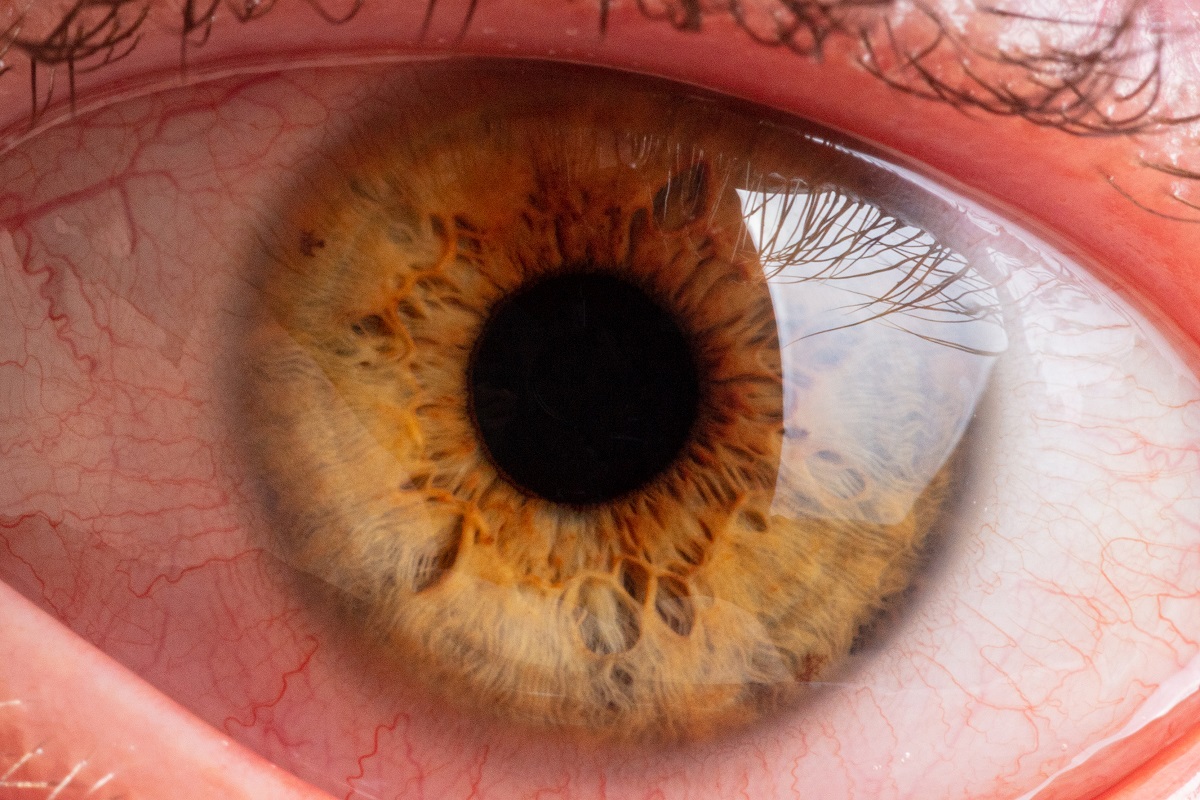This is a type of eye cancer that usually begins when certain cells begin to grow in the retina. It is known as retinoblastoma and it happens mostly in children under 2 years old. Moreover, it often impacts only one eye but it can affect both eyes (rarely). The light-sensitive lining inside the eye is called the retina. It consists of nerve tissues that notice the light as it enters through the eye front. Thereafter, the retina sends visual information to the brain which allows us to see.
In any case, different treatment options are available for this type of eye cancer. In other words, the prognosis for children with retinoblastoma is quite good and it does not require eye removal.
Symptoms
- Eye redness and swelling
- A white color appears in the center eye circle. It can easily noticed during flash photos
- Loss of vision
- Sometimes, eyes seem to look in different directions
If you or your child experience any of the previous symptoms, contact a healthcare professional right away.
Causes
Experts believe that retinoblastoma occurs due to certain changes that occur in the eye cells. However, they do not fully understand why changes that provoke cancer happen.
Commonly, it begins DNA changes appear in the eye cells. In normal circumstances, the DNA tells cells how to multiply, grow, and die. However, cancerous cells give different instructions to the eye cells, which leads to quickly multiplying of these cells. As a result, cancerous cells continue living while healthy ones die. In people with this eye cancer type, cancerous cells start growing in the retina.
When cancer cells start to build up, they form a tumor. Thereafter, these tumors tend to grow and destroy healthy body cells. Sometimes, tumors can spread to other body tissues and organs (metastasis). However, this cancer type usually does not spread, especially if it is diagnosed early.
Some healthcare providers think there is a link between genes and DNA changes that lead to retinoblastoma. In any case, more research is required to confirm this potential cause of retinoblastoma.
Risk Factors
- DNA changes – There are some DNA changes that occur in biological parents and then pass to the biological children. Therefore, these changes can contribute to or even cause retinoblastoma.
- Age – This cancer type is usually found in very young children (before 2 years old). Rarely, this cancer type can happen later in life.
What Are The Possible Complications of Retinoblastoma?
Check below some complications that can happen in people with retinoblastoma:
Recurrent Cancer
Those who are treated for retinoblastoma are at increased risk of cancer recurrence. It can return to the eye or near it. Thus, healthcare professionals recommend regular eye examinations every 2-3 months for at least 2-3 years after treatment.
Elevated Risk of Other Cancer Types
Those who suffer from this eye cancer are at increased risk of developing other types. For example:
- Bone, bladder, or breast cancer
- Lung cancer
- Hodgkin lymphoma
- Melanoma
- Pineoblastoma
- Soft tissue sarcoma
Talk with your healthcare professional for more details.
Prevention
Unfortunately, there is no way to prevent this condition. Some experts believe that retinoblastoma can run in families by DNA changes. In such cases, genetic tests are recommended to determine the risk of retinoblastoma.
Furthermore, if your children have an increased risk of retinoblastoma, it is advised to discuss with your healthcare professional about eye examinations. These eye exams are done right after birth which can help to diagnose this eye cancer very early. In such cases, there is a greater chance to cure the cancer.
Additionally, if you planning to have children, you can also talk with your doctor about a family history of retinoblastoma and perform some genetic tests. Thus, doctors can determine the risk of passing the abnormal DNA to the children.
Diagnosis
Commonly, the retinoblastoma diagnosis begins with an eye examination. However, doctors may also perform some imaging tests to identify the cancer size. For example:
Eye Examination
During this test, doctors will examine carefully the child’s eyes to check for abnormalities. They can also use a special light that helps the doctor look inside the eye.
Imaging Tests
These tests help to make detailed images of the eye. Therefore, doctors can determine the cancer size and whether it has spread or not. They often perform MRI (magnetic resonance imaging), ultrasound, and others).
Genetic Tests
This is a test that helps doctors to look for DNA changes. It uses a sample of saliva or blood. Physicians look for changes in the RB1 gene because it commonly provokes retinoblastoma.
In addition, all people with retinoblastoma have certain changes in the RB1 gene. However, if these genes pass from biological parents to biological children, RB1 gene changes happen throughout the body. Moreover, in case doctors determine RB1 changes before pregnancy it may help to make a treatment plan for the unborn child. In case the RB1 gene changes happen in the entire body, it elevates the risk of other cancer types too.
Treatment
The most common treatment options used to treat retinoblastoma include cold therapy, laser therapy, and chemotherapy. Sometimes, along with previous treatments, doctors may recommend radiation therapy. In addition, the only way to cure retinoblastoma is eye removal but this treatment method is used quite rarely.
However, the best treatment for patients with retinoblastoma is different because it depends on the cancer size, its location, and if the tumor spreads to other body parts.
Chemotherapy
This treatment method involves strong medications that help to destroy cancer cells. Commonly, it is the main retinoblastoma treatment. Healthcare providers usually prescribe additional treatments when cancer cells remain after chemotherapy. Check below some types of chemotherapy:
- Chemotherapy that goes throughout the body – In such cases, the medications that your doctor prescribes, travel throughout the body and kill the cancer cells. The duration of the treatment with such medications usually is several months.
- Chemotherapy that is injected into an artery near the cancer – In this type of chemotherapy, doctors will inject the medicine into an artery near the eye cancer. They usually use a special tube that is inserted into an artery in the groin area and medication goes through this tube. Sometimes, this procedure is known as intra-arterial chemotherapy.
- Chemotherapy given directly in the eye – During this treatment option, doctors will inject the medication into the eye using a tiny needle. Doctors call this procedure intravitreal chemotherapy. This chemotherapy type is often used when other types are not effective.
Cold Therapy
This treatment is also known as cryotherapy and involves extreme cold that helps to damage cancer cells. Cold therapy is usually used after chemotherapy to destroy the cancer cells that remain or if you experience a small retinoblastoma.
Laser Therapy
This procedure uses a laser that kills cancer cells and it is known as transpupillary thermotherapy. It is commonly prescribed by doctors after chemotherapy when some cancerous cells can remain. In case you experience a small retinoblastoma, this can be the only treatment option used. Doctors will repeat laser therapy until tests will show that there are no cancer cells remaining.
Radiation Therapy
This is a cancer treatment that uses powerful energy to destroy cancer cells. There are two types of radiation therapy used for retinoblastoma treatment. These include placing the radiation device on the eye and using a machine that delivers radiation to the eye (also known as external beam radiation). Additionally, if your child receives external beam radiation, it may lead to certain adverse reactions. Hence, this external therapy is used when the cancer is extended beyond the eye.
Surgery
Surgery is usually recommended by doctors when other retinoblastoma treatments do not work for you. This procedure involves the removal of the eye, which helps to treat retinoblastoma. It also can help to prevent the spread of the cancer to other body parts. Check below some surgery options:
- Surgery to remove the eye – This surgery is known as enucleation and it involves the removal of the eyeball. Before eye removal, surgeons will disconnect the muscles and tissues that surround the eye. Furthermore, a small portion of the optic nerve that comes from the brain also can be removed.
- Eye implants – Immediately after eye removal, surgeons will place a ball into the eye socket. This ball is called an implant and sometimes the nerves that are responsible for eye movement can be connected to this implant. However, before healing the muscles responsible for eye movement will adapt to the implant. As a result, the implant can be moved as the natural eye did. Unfortunately, the implant cannot see.
- Fitting an artificial eye – This artificial eye usually is placed over the implant and it looks similar to the natural eye of the child.
Frequently Asked Questions
Can retinoblastoma be cured?
Yes, and approximately 9 children out of 10 are cured of this cancer type. This cancer type is curable when it is early diagnosed and treated. Otherwise, it may spread to other body parts.
What are the potential retinoblastoma complications?
In case you ignore this cancer type and do not receive treatment, it may lead to the following complications. For example:
- Other health problems
- Cancer progression, which can provoke permanent eye damage
- Blindness
- Visual impairment
- Death
Discuss with your healthcare professional if you suspect your child has this cancer type.
Can retinoblastoma negatively affect the brain?
Despite this eye cancer occurs in rare cases, it can negatively affect the brain, spinal cord, bone marrow, or lymph nodes. In other words, it can spread to the central nervous system (CNS) through the optic nerve. The most common treatment options include radiation therapy, chemotherapy, and a bone marrow transplant. In case you have additional questions, ask your healthcare professional.




